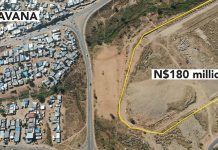By Marion Guégan, Cécile Schilis-Gallego | 20 June 2019
It is difficult to move in its narrow streets, crowded with bikes and street vendors. A concert of horns is constantly playing. Away from the mainstreets, there is a square surrounded by small houses. Among them, a quiet two-room houseis hidden from passersby by a green 10-foot wall and blue iron doors. Behind those, themystery of what happened to Indian independent journalist Jagendra Singh four years agohas still not been solved.
On June 1, 2015, Singh was awaiting a visit, though he wasn’t sure what to expect. He hadbeen writing for weeks about the alleged involvement in illegal sand mining of local politicianRammurti Singh Verma. Now was the time for a meeting.
Yet, early in the afternoon, the police showed up at Singh’s house. Singh’s family sayssupporters of Verma also came along. Soon after, Singh arrived at the hospital in agony withburns over 50% of his body.
“What was the need to kill me?” he said in a video recorded in the hall of the local hospitalhe was quickly brought to. “The motherfuckers poured petrol on me. They jumped over thewall and got in. If they wanted to, they could have arrested me instead.
”With his eyes closed and unable even to look into the camera, he accused police officersand supporters of Verma of setting him on fire. In the video, one can see his devastatingburns. He died from his injuries seven days later. He was 46 years old.
Beyond the dates and protagonists involved, facts are disputed. Singh’s family said he wasattacked and set on fire. The police concluded he committed suicide. The only eyewitness tothe incident, a friend of Singh’s who was in the house with him, initially supported his versionof events but changed her story multiple times. Even in a recent interview, she nervouslygave three completely different accounts of what happened that day.
Forbidden Stories, an international consortium of 40 journalists publishing in 30 mediaorganizations around the world, collected testimonies that challenge the official version ofsuicide. We found that Singh’s death seems to be part of what is quickly becoming thehistory of repression and silencing of journalists by Indian sand tycoons.
“The moment he wrote against the minister [Verma], he was in trouble,” Singh’s widow said.
” I scolded him. I said you should not writing such stories, and he said, he wanted to finish.”Since the beginning of his journalistic career in 1999, Singh had changed employers multipletimes because he regularly felt censored. “Sometimes the bosses would be asked to drop astory or be paid money to ensure the news is never carried, and dad would get angry,”remembers Rahul, Singh’s second son.
Singh published his first Facebook post accusing Verma – then a welfare minister in UttarPradesh – of running illegal operations on April 27, 2015. His journalism on Facebook wasfollowed by thousands of people.
“There is hardly any illegal business left that is not being run by Minister Ramamurthi SinghVerma,” he wrote. One of the minister’s businesses, he said, was illegal sand mining. Alongwith photos, Singh published a story accusing the minister’s workers of illegally mining sandin the Garra River. Singh asserted that Verma bribed the local police with 10,000 rupees($150 U.S. dollars) daily to allow mining.
A spokesperson for Verma said he was unable to respond because he was hospitalized.
Tensions between the two men had grown for weeks. Supporters of Verma had filedallegedly false complaints against the journalist. It only got worse as Singh kept writing aboutthe minister. The threats were also physical: his ankle was broken in what he described asan attack from Verma’s henchmen.
Yet, Singh persisted. His friends confess that at some point – in what they describe as anout-of-character act – Singh decided to play by the same rules as the minister. Desperate, he helped file an allegedly false complaint against Verma accusing him of raping a woman. The complaint was withdrawn after Singh’s death.
The day of Singh’s funeral, on June 9, 2015, his son filed a complaint against Verma and five policemen for conspiracy to commit murder and immolation. It was not long before theformer minister got in touch with the family.
For the first time, members of Singh’s family told Forbidden Stories and a journalist from LeMonde (France), that they dropped the case after reaching a compromise with Verma.
After Singh’s death, media attention had kept the family safe and hopeful for a few weeks. But at some point journalists left. The family began to feel isolated and helpless in facing Verma. Relatives and friends started to push them to accept an agreement with the formerminister. Singh’s widow said she was scared for her children’s lives.
“Many of our relativessuddenly turned against us,” she recalls. “They told us there [was] a threat to the lives of mychildren.”
The family claims that Verma gave them the equivalent of three million rupees ($45,000 U.S.dollars) in cash. They understood that this generous donation was conditioned on a declaration from the family saying Singh had killed himself. Eventually, on July 23, 2015, Singh’s son withdrew his complaint.
A month later, Verma made a deposition to the police in which he called the complaint filed against him by Singh’s son “bogus.” Verma also stated that nobody had harassed Singh, nordid anyone set him on fire. In this statement Verma does not talk about the agreement with the family nor the money.
According to the family, Verma wanted the money to be spent on Singh’s daughter Diksha. “Educate her and let her study until she wants to and then get her married, use that moneyfor her marriage,” Singh’s son recalls Verma saying.
Today, the family is torn apart over this compromise. Singh’s daughter – determined to have her father acknowledged as having been murdered – refuses, against her family’s wishes, to touch the money as much as she refuses to get married.
“He wanted to fight to get justice, and he always wanted to do something good for Shahjahanpur,” she remembers today. “Very few people are so brave to take on such a powerful minister. My father was one such rare people who exposed the truth.”
In India, Singh was not the only journalist allegedly attacked for writing about the sand mafias. Sandeep Kothari, who died just a couple of weeks after Singh, Karun Misra (February 2016) and Sandeep Sharma (March 2018) were all investigating illegal sandmining when they were killed.
“The ‘sand mafia’ is currently considered to be one of the most prominent, violent andi mpenetrable organized crime groups in India,” according to Aunshul Rege, an associate professor in the criminal justice department at Temple University in Philadelphia. And they are eager to keep their business secret.
On the ground, NGOs and journalists who tried to pull back the curtain on the workings of the sand mining industry have faced an immediate battery of threats. As you get closer, warnings are prompt: when you waltz around the sand business, intimidation is frequent, corruption is systemic.
For, despite being seemingly available to anyone, sand is a lucrative commodity. Beaches are the source of valuable minerals such as garnet, ilmenite and zircon – used, among otherthings, to cut and blast metals in aircraft manufacturing or the automotive industry.
Along the coast of Tamil Nadu, illegal sand mining has been rampant since 2000. In 2013, state authorities finally decided to take action. A ban on mining was declared while inspections into illegal activities of private miners were opened. Yet, between 2013 and 2016, private miners continued to export more than two million metric tons of minerals internationally, according to an expert report submitted to the Madras High Court.
Sandhya Ravishankar, a Chennai-based journalist in Tamil Nadu, is one of the few journalists who has investigated this issue.
As soon as her first story appeared in 2013, she was reminded of the sensitivity of the subject: “The day we published it, within an hour or two, we had a defamation suit slapped on the newspaper, and I was included in the names of the accused.” The Chennai-based journalist then wrote a series of six more articles. No one wanted to publish her reporting. Finally in January 2017, the Indian non-profit news website The Wire published the results of her investigation. The journalist says she started receiving threatening phone calls, was followed, and had video surveillance footage of her meeting a source posted on the internet.
“Sandhya Ravishankar has personal enmity against our company,” said a spokesperson for one of the companies she wrote about. In a long statement they criticized at length the journalist whom they say works for one of their competitors.
Following these threats, Ravishankar continued her investigation from a distance. For safety reasons, she has never gone back in person to this particular area. Forbidden Storiesw orked along Ravishankar to keep reporting on illegal beach sand mining in Tamil Nadu.
In one of the districts where illegal extraction has been most aggressive, people are afraid to talk. The fear is such that some inhabitants do not dare to say the name of the local beachsand mining empire: V.V. Mineral.
The company is headed by S. Vaikundarajan, whose name appears more than once in state and court-appointed investigations. “About, say, 85 to 90 % of beach sand mining, legal and illegal, is monopolized by this one family,” said Ravishankar.
In a statement to Forbidden Stories, Vaikundarajan’s spokesperson indicated that as far as those investigations were concerned “all the allegations made were without any basis and not in accordance with the law.” The company considers that it has never acted illegally and disputes any pressure or threat on anyone.
There is a reminder of V.V. Mineral at every corner in Thisayanvilai. Most notable is the V.V.College of Engineering, an imposing brand new building established in 2010 and protected by security guards. The immaculate pink and white facade stands out in the middle of this rural and poor village. A little further along, a health center displays the name of the prominent sand business operator. Yet, the long-term environmental impact of sand mining tarnishes this gilded track record.
In a report published in May, the United Nations Environment Programme underlined the environmental and social impacts of sand extraction, saying it is an issue of global significance. “The increasing volume of aggregates extracted, often illegally, from riverine and marine ecosystems results in river and coastal erosion, threats to freshwater and marine fisheries and biodiversity,” it noted.
Beach sand minerals requires much fewer quantities of sand than construction but it can still disrupt the ecosystem. “We are the only company operating with valid environmental clearance… so the environmental degradation is an imaginary story spread with ulterior motive,” said Vaikundarajan’s spokesperson who blamed erosion on global warming.
Up until now, little has been done by authorities, journalists and non-governmental organizations to measure the toll sand mining has taken on the environment in Tamil Nadu. Yet testimonies point in the same direction.
“One impact which is very clear is that the sand dunes have disappeared, and the sea is coming into the land,” says Ravishankar.
Forbidden Stories journalists met with a fisherman from Kovalam, a village in Tamil Nadu, who complained that the sea nibbles more and more on the beach every year, ap henomenon called erosion, that the fisherman blames on illegal mining in the area. Houses must retreat inland or are swallowed by the sea. “All the houses that were here, three or four years ago, like our house, have all gone for good,” he said. He claims around 300 persons lost their homes in the area.
Due to the loss of the natural sand barrier, salty water is suspected to have seeped into the groundwater. “The water turned salty,” said a local farmer from Kuttam. “The banana plants couldn’t adapt to the salty water. After a point, I had to sell the land.”
The impact could be long-lasting. “Coastal erosion can occur even decades after sand extraction has stopped,” said Pascal Peduzzi, head of the Global Change & Vulnerability Unit at the UN Environment Programme.
In the meantime, reporters trying to expose the sand mafias that devour the Indian coasts keep coming constantly under threat. In May 2019, the Committee to Protect Journalists noted new attack in Odisha, a coastal state north of Tamil Nadu. “Six unidentified individuals wielding a machete and other sharp objects attacked journalist Pratap Patra,” who has said he believes this was related to an article he published alleging that a local sand mining operator was working illegally, according to CPJ.
“There used to be a few journalists before I started, but they were harassed and their families were frightened and threatened, and they just had to back off. They didn’t really have a choice,” said Ravishankar about reporting on illegal sand mining in Tamil Nadu.
“Today I’m probably the only one who is still poking my nose into this.”
Forbidden Stories, an international consortium of 40 journalists publishing in 30 media organizations around the world, looked into the violent censorship and environmental damage left behind by these sand barons. This is part of the “Green Blood” series, a project pursuing stories of journalists who have been threatened, jailed or killed while investigating environmental issues.It takes nearly four hours by car from Lucknow, the capital of Uttar Pradesh, to reach the deafening city of Shahjahanpur.
The Namibian has partnered with Forbidden Stories — a non-profit project founded by the Freedom Voices Network investigative newsroom — to launch ‘Green Blood’: a series of stories which detail the deliberate silencing of journalists in various parts of the world. The series will include the stories of journalists from India, Guatemala and Tanzania, whose lives were endangered while in the line of duty.






